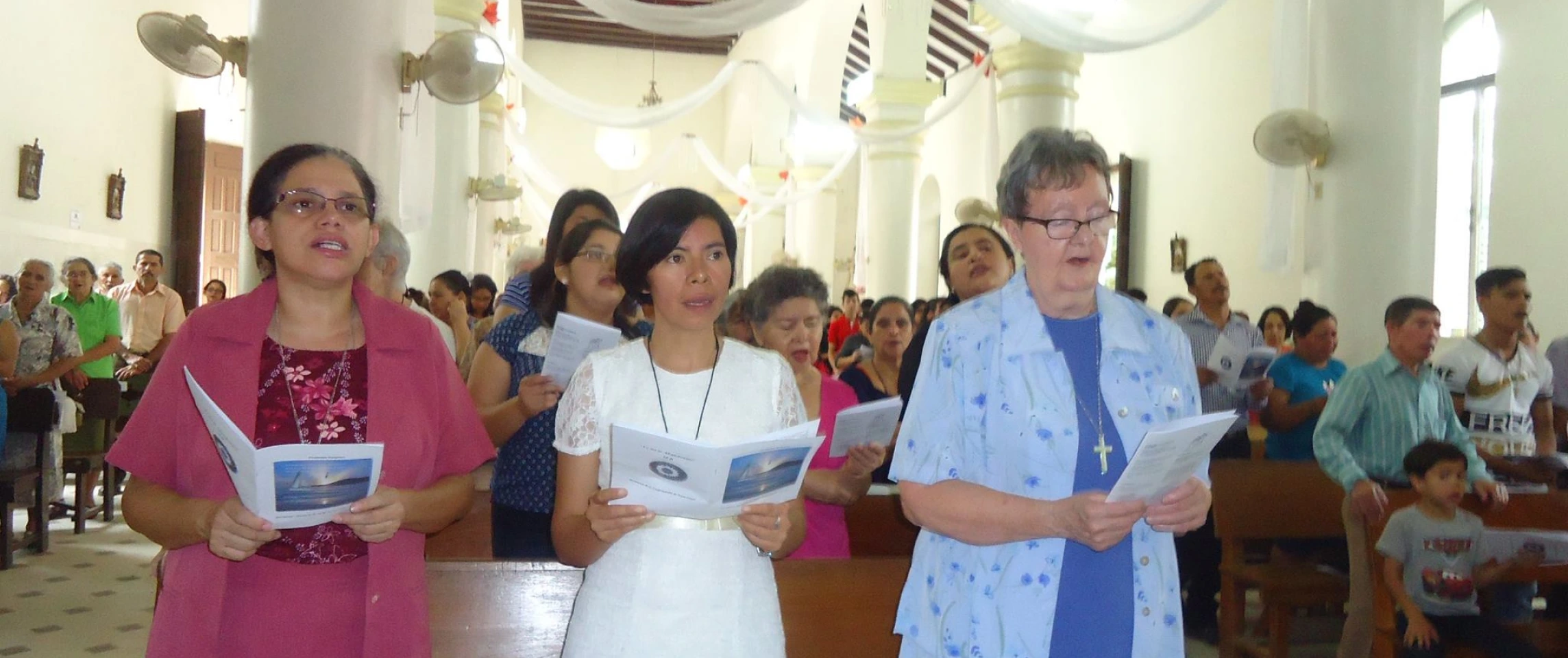History of the Congrégation de Notre-Dame
The Congrégation de Notre-Dame, the first non-cloistered women’s religious community in North America, was founded in Ville-Marie (now Montreal) in the 17th century by Saint Marguerite Bourgeoys, a native of Troyes (France).
At the request of Paul de Chomedey de Maisonneuve, founder and governor of the colony, she crossed the Atlantic in 1653 to devote herself to the education of French and First Nations children.
Even during her lifetime, the school system established in Ville-Marie by Marguerite Bourgeoys and her companions began to expand to all regions of Quebec. Little by little, the Church called for the presence of the Congrégation de Notre-Dame in Ontario, the Maritime Provinces of Canada, and the United States.
In the twentieth century , the sisters opened missions in Japan, Central America, Africa, and France.
Today, the sisters of the Congregation and associates work in several fields, including teaching, socio-educational services, vocation promotion, pastoral ministries, social justice and the protection of cultural heritage.

Marguerite, Her Courage and Her Faith: The Biography of a Pioneer in New France
Adaptation de l’introduction du volume de Patricia Simpson, CND, Marguerite Bourgeoys et Montréal,1640-1665, traduction de Simone Poissant (Montréal, McGill-Queen’s University Press, 1999)
First Teacher in Montreal
The city of Montreal came into existence through the desire of a group of men and women in seventeenth-century France. They dreamt of forming a model Christian society in New France where French and Indigenous people would live in harmony. To attain this end, the Société de Notre-Dame de Montréal was formed in 1640 and, in May 1642, Ville-Marie was founded on the Island of Montreal.
Native of Troyes, in the Champagne region of France, Marguerite Bourgeoys arrived in Ville-Marie in 1653 with the recruitment known as the “hundred men,” who were to protect the colony from grave dangers. Marguerite’s arrival fulfilled part of the initial plan that included the education of the children of the colony.
However, Marguerite needed to wait until 1658 for there to be enough children to open a school. Governor Maisonneuve then gave her an abandoned stone stable. Marguerite worked with the children to clean the stable. On April 30, 1658, the children began school.
Liberating Education
The instruction Marguerite Bourgeoys provided to the children and women was foremost an education in faith. This faith is deeply rooted in the double commandment of love: “You shall love the Lord your God with all your heart and soul and mind, and you shall love your neighbour as yourself.”
Free of charge, the children learned to read, write, count and manual skills. Her first pupils were neither wealthy nor powerful; they were the children of colonists who were building Montreal. Very early on, they faced the challenging tasks of earning a living for themselves and their families. To enable them to accomplish these tasks, she stressed the importance not only of “honourable work” but also the value of their efforts.
She welcomed the “King’s Wards” who came as prospective brides to New France and helped them adapt to their new country and situation. She also opened workshops where poor women could learn crafts that would enable them to earn their living. She believed in an education centred on the individual that took into account the person’s dignity. The aim of “liberating education” is to develop the individual’s full potential.
Uncloistered Congregation
Until the seventeenth century, and even much later, women who lived in community were required to be cloistered and were prohibited from leaving their convents. The material security of these communities depended on endowments and dowries, thereby closing them to poor women unless they could find a sponsor.
Marguerite founded the Congrégation de Notre-Dame. It is one of the first uncloistered religious communities of women in the Catholic Church and the first in North America. This community was self-supporting and, unlike most of its counterparts in France at the time, has survived to this day.
Her inspiration in founding such a community was Mary, the mother of Jesus, whom she considered as the first and most faithful disciple of the Lord, going about teaching and doing good in the primitive church. Her sense of identification with this figure grew with her own experience during Montreal’s earliest days.
After more than three centuries, the adventure continues
In Marguerite’s time, the Congregation was made up of French and North-American sisters of French, Indigenous and English descent. Her educational endeavor spread beyond Montreal to Quebec City and the villages along the St-Lawrence River.
Marguerite’s Congregation has endured and her community can now be found in Canada, the United States, Japan, Honduras, Guatemala, El Salvador, France and Cameroon. Women from these countries have joined the Congregation and, as in Marguerite’s time, undertaken the work of “liberating education” in many forms.
On October 31, 1982, Marguerite Bourgeoys was canonized by Pope John Paul II. She became the first saint of Canada. Marguerite was a pioneer who endeavoured to build a better Church and society. After more than three centuries, she continues to invite us to collaborate for a more just world.